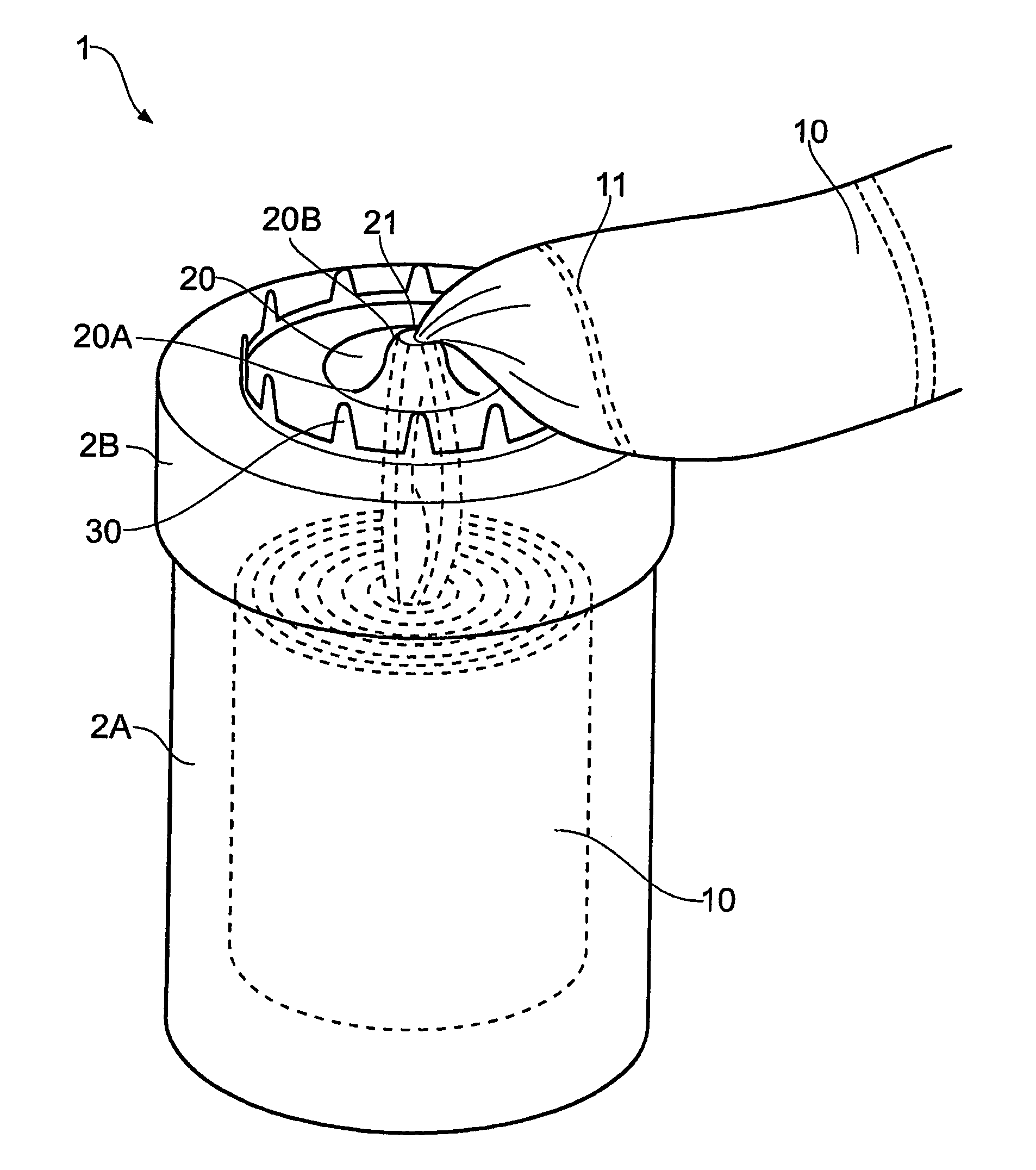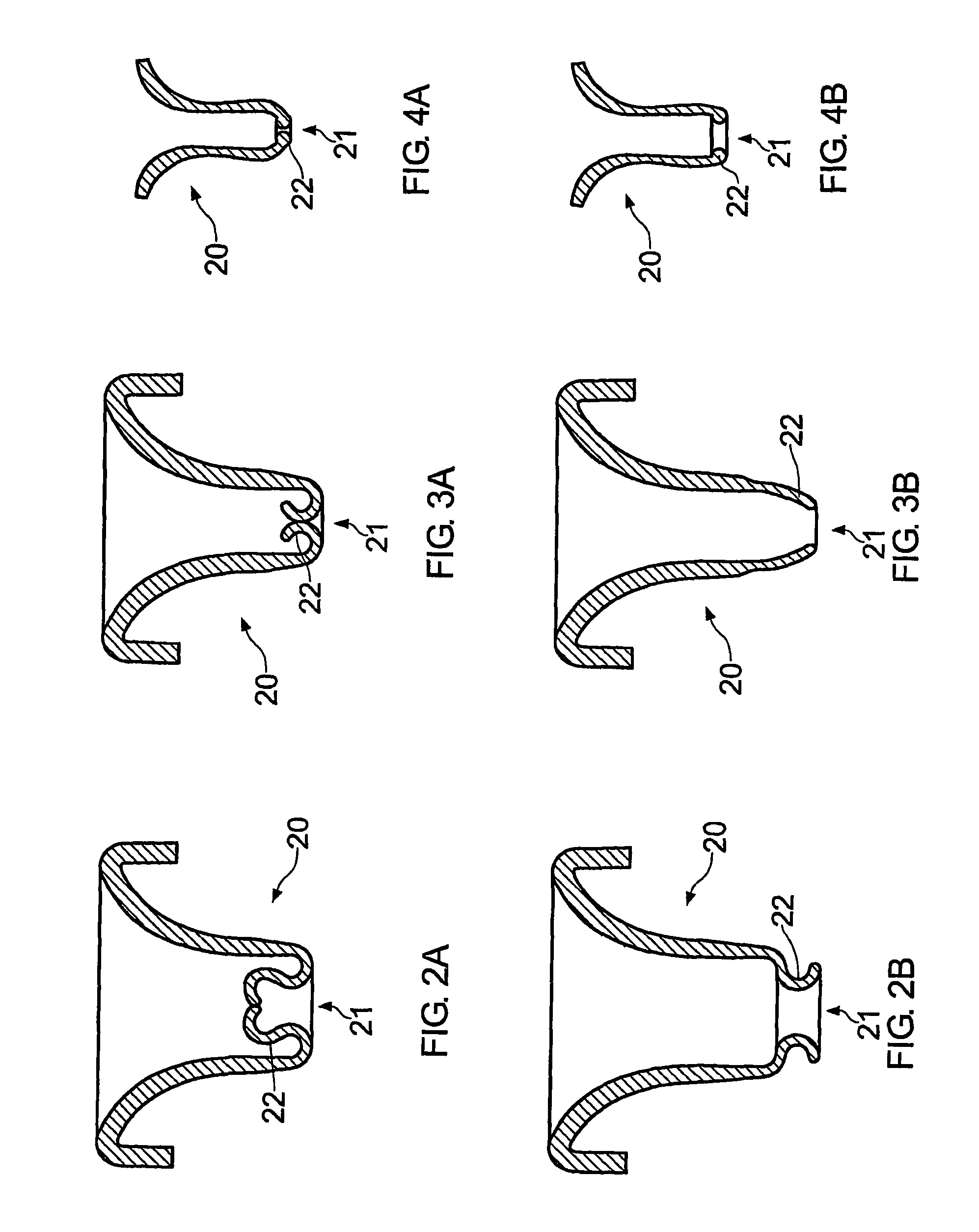Container of wipes with dispensing nozzle
a technology of wipes and containers, applied in the direction of containers, pile separation, tray containers, etc., can solve the problems of wipes drying out, wipes being left in the tail of the next wipe, and the ‘stream’ of wipes being inadvertently extracted
- Summary
- Abstract
- Description
- Claims
- Application Information
AI Technical Summary
Benefits of technology
Problems solved by technology
Method used
Image
Examples
first embodiment
[0046]In FIGS. 2A and 2B there is shown in cross section nozzle 20 with an aperture 21 defined by a rolled ring 22 which moves from a first contracted position (FIG. 2A) to a second expanded position (FIG. 2B) as a wipe is extracted through the aperture. As shown, part of the nozzle adjacent the aperture inverts when moving from the first contracted position to the second expanded position. The nozzle 20 is shaped such that any force pulling a wipe back through the aperture when in the expanded state into the housing biases the nozzle aperture from its expanded state into a contract state.
[0047]In FIGS. 3A and 38 there is shown in cross section, a further embodiment of nozzle 20 with an aperture 21 defined by a rolled tip 22 which moves from a first contracted position (FIG. 3A) to a second expanded position (FIG. 3B) as a wipe is extracted through the aperture 21. As shown, part of the nozzle adjacent the aperture inverts when moving from the first contracted position to the second...
fourth embodiment
[0050]In FIGS. 5A and 5B there is shown in cross section nozzle 20 with an aperture 21 defined by an annular projection 22 which moves from a first contracted position (FIG. 5A) to a second expanded position (FIG. 5B) as a wipe is extracted through the aperture 21. Before a wipe is inserted therein, nozzle 20 wall has a widened base 20A which tapers inwards towards 20B and then curves outwards 20C into the annular projection 22. The tapering inwards and curving outwards of the wall creates a funnel to funnel a wipe through the aperture smoothly. This prevents wipes from bunching and clogging the nozzle, or premature severance of perforations before a wipe has fully exited the aperture 21 and exposed the tail of the next adjacent wipe.
[0051]The inside wall of the annular projection 22 may support one or more annular ratchet teeth 23 to grip a wipe to help prevent a wipe falling back through the nozzle 20 into a container. Instead of annular ratchet teeth, one or more annular ribs (e....
PUM
| Property | Measurement | Unit |
|---|---|---|
| force | aaaaa | aaaaa |
| flexible | aaaaa | aaaaa |
| coefficient of static friction | aaaaa | aaaaa |
Abstract
Description
Claims
Application Information
 Login to View More
Login to View More - R&D
- Intellectual Property
- Life Sciences
- Materials
- Tech Scout
- Unparalleled Data Quality
- Higher Quality Content
- 60% Fewer Hallucinations
Browse by: Latest US Patents, China's latest patents, Technical Efficacy Thesaurus, Application Domain, Technology Topic, Popular Technical Reports.
© 2025 PatSnap. All rights reserved.Legal|Privacy policy|Modern Slavery Act Transparency Statement|Sitemap|About US| Contact US: help@patsnap.com



